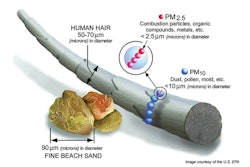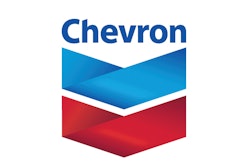Reaction Design, the leading developer of combustion simulation software, has successfully concluded its work leading the Model Fuels Consortium (MFC), an organization that has involved 20 automotive and energy industry luminaries engaged in the development of accurate fuel models for use in combustion simulation. The MFC was established in 2005 as the industry’s first collaborative research consortium made up of the world’s leading automotive and energy producers. It was formed in response to the growing pressures on engine and fuel manufacturers worldwide to improve both emissions and fuel efficiency. MFC charter members representing Chevron, Dow Chemical Company, Conoco-Phillips, Institute Français du Pétrol (now IFP Energies nouvelles), PSA Peugeot Citroen, Mitsubishi Motors, Nissan and Toyota were later joined by representatives of Cummins Engine, Ford, General Electric Energy, General Motors, Honda, Mazda, Oak Ridge National Laboratories, Petrobras, Saudi-Aramco, Volkswagen, all of whom joined with Reaction Design engineers to develop, validate and apply fuel models and simulation methods that enable improvements to engine and fuel design, ultimately leading to cleaner burning engines.
“As the cost of engine testing and fuel design continues to rise, it becomes increasingly important to use accurate fuel models in simulation,” says Bernie Rosenthal, CEO of Reaction Design. “The Model Fuels Consortium provided a forum for automotive and energy leaders to leverage the precompetitive nature of the consortium to develop software tools and well validated fuel models more effectively than any single company could have done on its own.”
Throughout its seven-year tenure, the Consortium conducted two phases of research. At its launch, MFC members organized with the goal of establishing a practical methodology and the associated software and models needed to improve accuracy of engine simulations. The MFC pioneered the use of “surrogate modeling” where complex fuel chemistry could be represented by a reduced number of well characterized molecular models and reactions selected to accurately simulate specific behaviors like ignition delay or pollutant emission production. This addressed the fact that both carbon-based fuels such as diesel, gasoline jet fuel and natural gas and alternative fuels like ethanol and bio-diesel consist of hundreds of molecules involved in thousands of chemical reactions during the combustion process. Surrogate modeling necessitated the creation of a well-validated database of “Model Fuel” components as well as innovative new engineering analysis tools.
In 2008, Reaction Design announced the launch of the MFC-II in response to tightening emissions standards and research linking respiratory conditions to harmful microscopic soot particles. As such, the MFC-II was formed with a goal to create software models and tools that could allow engine designers to predict soot particle size and number. After nearly four years of intense research and development, MFC-II members can now use Reaction Design’s software tools such ENERGICO and FORTÉ, and the updated MFC fuel models to accurately simulate the formation, agglomeration and oxidation of soot particles, enabling designers to create cleaner-burning engines and better respond to anticipated changes in fuel compositions.
“The ability to predict soot particle sizes and reduce particulate emissions to meet regulations can save months of development time, cost and most importantly, help address growing global air quality concerns,” says Charlie Westbrook, senior scientist at Lawrence Livermore Laboratory and chief technical advisor to the MFC. “The MFC has provided a unique opportunity for fuel and auto leaders to closely collaborate with one another for a common goal: the continued development of tools and models to solve fuel efficiency and pollution challenges we all shared.”



















